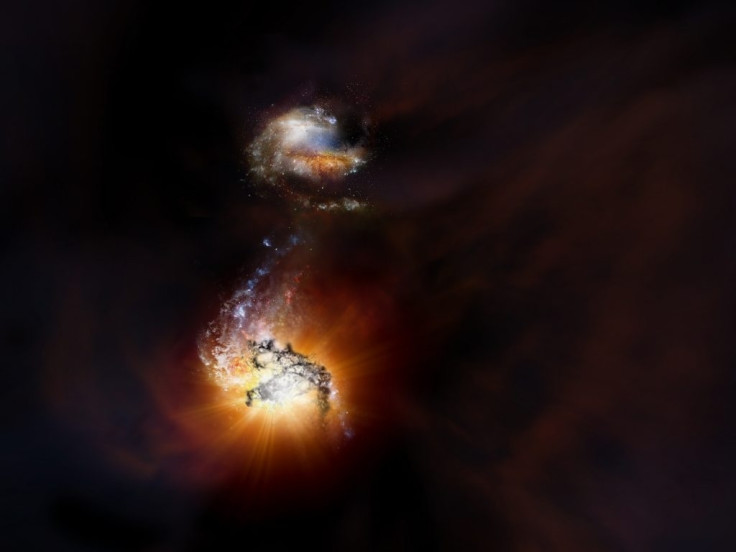Astronomers just spotted two incredibly massive 'starburst' galaxies on a collision course
The galactic pair, dubbed ADFS-27, is located approximately 12.7 billion light-years away from Earth.
In a "never-seen-before" discovery, astronomers using the ALMA radio telescope in Chile have spotted two incredibly, bright massive galaxies, aka "hyper-luminous starburst galaxies", on a collision course, according to a release from the National Radio Astronomy Observatory (NRAO).
The galactic pair, dubbed ADFS-27, is located approximately 12.7 billion light-years away from Earth. This means the astronomers spotted the interaction as it appeared in the early universe when it was just about one billion years old.
The two galaxies, which are some 30,000 light–years apart, are moving towards each other at several hundred kilometres per second.
At this rate, the observation suggests, they'll slow and fall towards each other, ultimately merging into one massive, elliptical galaxy. However, the whole process could take a few hundred million years to complete.
"Finding just one hyper-luminous starburst galaxy is remarkable in itself. Finding two of these rare galaxies in such close proximity is truly astounding," said Dominik Riechers, lead author of the paper detailing the discovery.
The astronomers spotted the closely tied system while surveying the southern sky from ESA's Herschel Space Observatory. It first appeared as a faint red dot, but follow-up observations with the Atacama Pathfinder EXperiment (APEX) telescope and ALMA helped scientists measure the distance to the object, ultimately discovering that these are two distinct galaxies.

The galaxies are extremely bright due to the presence of rapid star-forming activity inside each one of them. As the NRAO points out, ADFS-27 is nearly a thousand times faster than our Milky Way when it comes to star formation.
"Considering their extreme distance from Earth and the frenetic star-forming activity inside each, it's possible we may be witnessing the most intense galaxy merger known to date," says Riechers.
Moving ahead, the astronomers speculate the merger of the two galaxies could also form the core of a galactic cluster – groups of hundreds to thousands of gravitationally bound galaxies revolving around a central core.
For further studies to better understand the nature of this and other rare systems, ALMA data will be combined with infrared observations from Nasa's James Webb Space Telescope, which is set to launch in 2019.






















